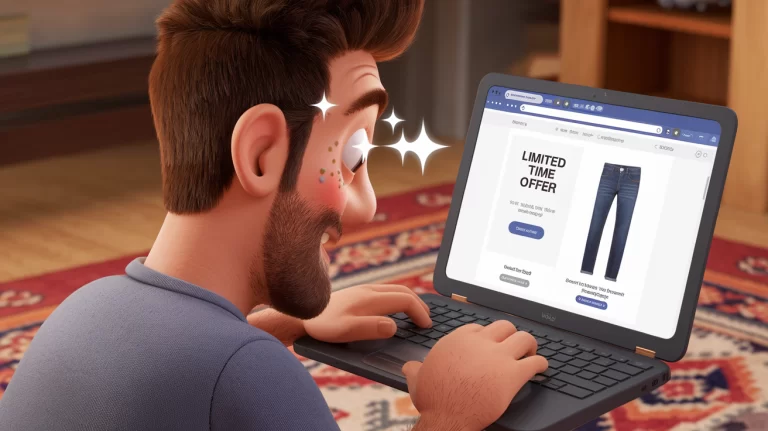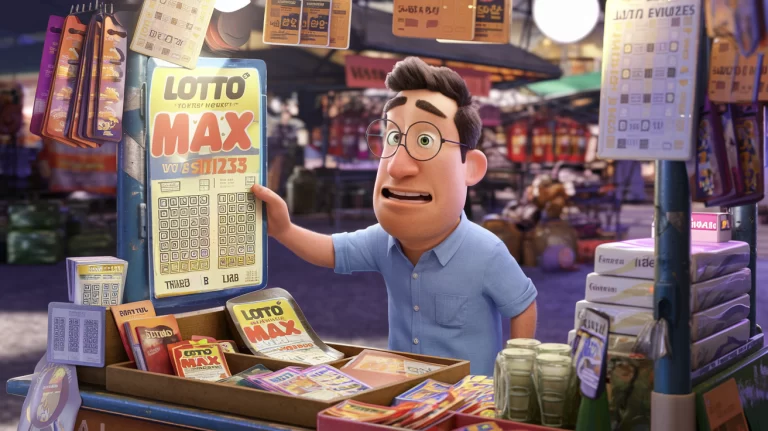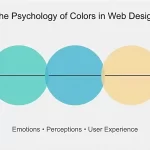Ahoy, fellow brain-havers! 👋 Ready to embark on a thrilling journey through the treacherous waters of your own mind? Buckle up, buttercup, because we’re about to dive deep into the world of anchoring bias – that sneaky little mental shortcut that’s probably costing you more money, time, and sanity than you realize.
What the Heck is Anchoring Bias, Anyway?
Picture this: You’re scrolling through your favorite online shopping site, minding your own business, when suddenly – BAM! – you’re hit with a “limited time offer” for a pair of jeans that are “originally $200, now only $99.99!”
Before you can say “impulse purchase,” your brain has already decided that $99.99 is a steal. But hold up, Sherlock! Did you even need new jeans in the first place? And who says $200 was a fair price to begin with?
Welcome to the wild world of anchoring bias, my friends. It’s like your brain’s very own overeager puppy, latching onto the first piece of information it sees and refusing to let go, no matter how many other shiny toys (or facts) come its way.
The Anchoring Effect: Not Just for Boats Anymore
So why does our gray matter fall for this trick time and time again? Well, turns out our brains are basically lazy freeloaders always looking for the easy way out. (No offense, brain – we still love you!)
When faced with a decision, especially one involving numbers or unfamiliar territory, our minds grab onto that first piece of info like it’s the last slice of pizza at a party. It becomes our “anchor,” and everything else gets judged in relation to it.
Reality Check: This mental shortcut can be handy when we need to make quick decisions, but it can also lead us astray faster than you can say “hold my beer and watch this.”
Anchors Aweigh: Where This Bias Pops Up in Real Life
Ready for a whirlwind tour of all the sneaky ways anchoring bias is probably messing with your life? Buckle up, buttercup!
1. The Price is (Not Always) Right
Remember our jean example? That’s just the tip of the iceberg, my fashion-forward friends. Retailers are masters at exploiting our anchoring weakness:
The “Was/Now” Game: That “original” price? Often inflated to make the sale price seem like a bargain.
The Left-Digit Effect: Why everything ends in .99 – because our brains are too lazy to round up.
The Decoy Effect: Putting an overpriced option next to the one they actually want you to buy. (Looking at you, movie theater popcorn sizes!)
Pro Tip: Always ask yourself, “What would I pay for this if I saw it with no context?” You might be surprised at your answer!
2. Salary Negotiations: Don’t Sell Yourself Short!
Picture this: You’re in a job interview, palms sweaty, knees weak, arms are heavy (thanks, Eminem). The interviewer drops the dreaded question: “So, what are your salary expectations?”
If you blurt out the first number that comes to mind (or worse, let them set the anchor), you might be leaving serious cash on the table. Remember, the first number mentioned becomes the anchor for the entire negotiation!
Reality Check: Do your research beforehand. Know your worth, and don’t be afraid to aim high. You can always come down, but it’s much harder to go up!
3. The Dieting Dilemma: Portion Distortion
Ever notice how restaurant portions seem to be growing faster than your waistline after the holidays? That’s no accident, my hungry friends. By serving up massive plates, restaurants anchor our idea of what a “normal” portion looks like.
The result? We end up eating way more than we need, both at restaurants and at home. (And don’t even get me started on the “clean plate club” – thanks, Mom!)
Fun Fact: Studies show that using smaller plates can actually help you eat less without feeling deprived. It’s like tricking your brain into thinking you’re eating more. Take that, anchoring bias!
4. The Auction Action: Going Once, Going Twice… Oops!
Ever been to an auction (or worse, caught in a bidding war on eBay)? That starting price isn’t just a suggestion – it’s a powerful anchor that can send prices skyrocketing faster than you can say “buyer’s remorse.”
Add in the time pressure and competitive spirit, and you’ve got a recipe for some serious overspending. (Ask me how I know. On second thought, don’t. My vintage Beanie Baby collection is none of your business.)
Pro Tip: Set a firm maximum bid before you start, and stick to it no matter what. Your future self (and bank account) will thank you.
5. The Investment Illusion: Past Performance ≠ Future Results
Investing can be a minefield of anchoring bias. We tend to fixate on things like:
A stock’s past high price (“It’ll definitely go back up!”)
Recent performance (“It’s been going up, so it must keep going up!”)
Round numbers (“I’ll sell when it hits $100!”)
Reality Check: The market doesn’t care about your anchors. Do your research, diversify, and remember that past performance is no guarantee of future results. (But you already knew that, right? Right??)
Breaking Free: How to Outsmart Your Own Brain
Now that we’ve thoroughly depressed you about all the ways your brain is working against you, let’s talk solutions! Here are some ways to fight back against the tyranny of anchoring bias:
Question Everything: Channel your inner toddler and ask “Why?” about every number or initial piece of information you encounter.
Do Your Homework: Knowledge is power, people! The more informed you are, the less likely you are to fall for arbitrary anchors.
Consider Multiple Perspectives: Don’t just look at one source of information. Shop around, get second opinions, and consider different angles.
Sleep On It: Big decisions deserve some beauty rest. Give yourself time to process and let that initial anchor loosen its grip.
Play Devil’s Advocate: Try arguing against your initial impression. You might surprise yourself!
Use Objective Criteria: When possible, rely on hard data and established benchmarks rather than gut feelings or arbitrary numbers.
Beware of Emotional Decisions: Feeling stressed, excited, or hangry? Maybe wait to make that big choice until you’ve had a snack and a nap.
The Bottom Line: Don’t Get Weighed Down!
Anchoring bias is like that clingy ex who just won’t let go – always there, trying to influence your decisions. But armed with knowledge and a healthy dose of skepticism, you can break free from its grasp and make smarter, more objective choices.
So the next time you’re faced with a decision, big or small, take a step back and ask yourself: “Is this really a good deal/idea/choice, or am I just anchored to the first thing I heard?”
Your wallet, your waistline, and your future self will thank you. Now go forth and conquer, you brilliant, bias-busting badass!
Coming Soon: Stay tuned for our next installment in the “Your Brain is a Trickster” series, where we’ll tackle the infamous “sunk cost fallacy” – or as I like to call it, “Why I Kept Watching Game of Thrones Even After Season 7.









